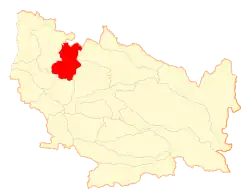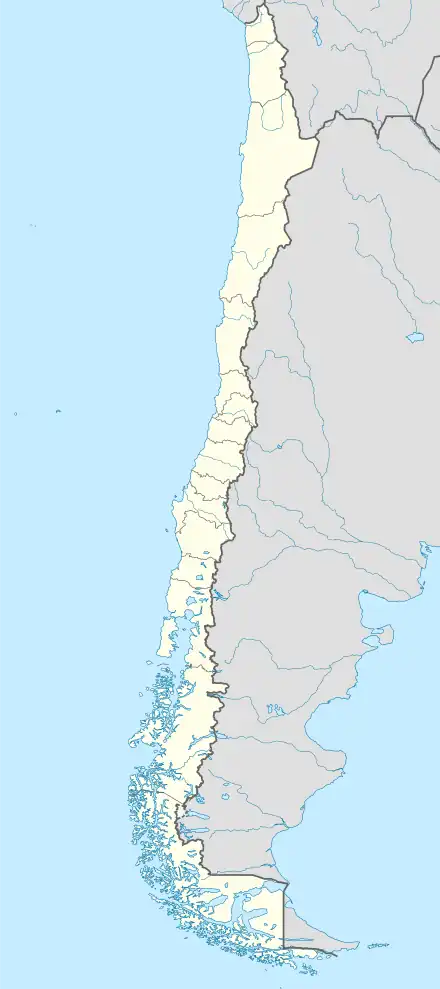Ninhue
Ninhue (Spanish pronunciation: [ˈnin.we]) is a Chilean commune and town in the Itata Province, Ñuble Region.
Ninhue | |
|---|---|
 Coat of arms | |
 Commune of Ninhue in the Ñuble Region | |
 Ninhue Location in Chile | |
| Coordinates: 36°23′37″S 72°23′51″W | |
| Country | Chile |
| Region | Ñuble |
| Province | Itata |
| Government | |
| • Type | Municipality |
| • Alcalde | Carmen Blanco Hadi (National Renovation, RN) |
| Area | |
| • Total | 401.2 km2 (154.9 sq mi) |
| Elevation | 86 m (282 ft) |
| Population (2012 Census)[3] | |
| • Total | 5,268 |
| • Density | 13/km2 (34/sq mi) |
| • Urban | 1,433 |
| • Rural | 4,305 |
| Sex | |
| • Men | 2,920 |
| • Women | 2,818 |
| Time zone | UTC-4 (CLT[4]) |
| • Summer (DST) | UTC-3 (CLST[5]) |
| Area code | country 56 + city 42 |
| Website | Comuna de Ninhue |
Demographics
According to the 2002 census of the National Statistics Institute, Ninhue spans an area of 401.2 km2 (155 sq mi) and has 5,738 inhabitants (2,920 men and 2,818 women). Of these, 1,433 (25%) lived in urban areas and 4,305 (75%) in rural areas. The population fell by 10.6% (679 persons) between the 1992 and 2002 censuses.[3]
Administration
As a commune, Ninhue is a third-level administrative division of Chile administered by a municipal council, headed by an alcalde who is directly elected every four years. The 2008-2012 alcalde is Luis Molina Melo (PDC).[1][2]
Within the electoral divisions of Chile, Ninhue is represented in the Chamber of Deputies by Jorge Sabag (PDC) and Frank Sauerbaum (RN) as part of the 42nd electoral district, together with San Fabián, Ñiquén, San Carlos, San Nicolás, Quirihue, Cobquecura, Treguaco, Portezuelo, Coelemu, Ránquil, Quillón, Bulnes, Cabrero and Yumbel. The commune is represented in the Senate by Alejandro Navarro Brain (MAS) and Hosain Sabag Castillo (PDC) as part of the 12th senatorial constituency (Biobío-Cordillera).
References
- "Asociación Chilena de Municipalidades" (in Spanish). Archived from the original on 24 August 2007. Retrieved 23 February 2011.
- "Municipality of Ninhue" (in Spanish). Archived from the original on 24 August 2007. Retrieved 23 February 2011.
- "National Statistics Institute" (in Spanish). Retrieved 13 December 2010.
- "Chile Time". WorldTimeZones.org. Archived from the original on 2007-09-11. Retrieved 2010-07-28.
- "Chile Summer Time". WorldTimeZones.org. Archived from the original on 2007-09-11. Retrieved 2010-07-28.
External links
- (in Spanish) Comuna de Ninhue
